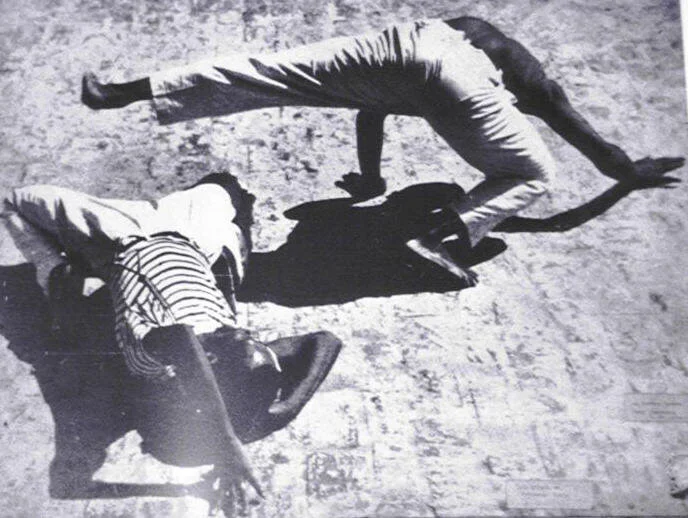
The evolution of capoeira
The beginning
Capoeira was developed as a form of self-defence by the African people in Brazil in the 18th Century. Capoeira incorporated diverse elements of African culture including dance, music, acrobatics and various fighting forms. This style of fighting, disguised as dance, has always been based on the principle of surprise and improvisation.
The African people who were enslaved by the Portuguese, were forced to create an effective and unknown fighting form both as a means of defence and a way to free them from slavery. Once free, the African Brazilian people formed hidden communities called Quilombos in the deep forest of the north-east of Brasil. There they were able to develop the fighting skill which today we call Capoeira.
Capoeira has evolved directly as part of Brazilian culture and history. From the Quilombos to the streets of Salvador, São Paulo and Rio de Janeiro, Capoeira thrived as an expression of life and resistance.
Capoeira evolves
In the early 20th century Capoeira was still regarded as an illegal activity and frequently players were attacked by authorities. This started to change after a group of capoeiristas born in the late 19th Century began to innovate and legitamise the artform by forming early capoeira academies. Capoeira spread from the north east of Brasil under the influence of two key masters, Mestre Bimba and Mestre Pastinha who are considered the first masters to bring Capoeira mainstream and accessible to the general public.
At this stage capoeira was becoming well known throughout Brasil with schools and acadamies opening in other major cities such as Rio de Janeiro and São Paulo.
Capoeira today
In the late 20th Century particularly from the early 1990s capoeira became known outside of Brazil and there was a world wide explosion of interest in this unique artform. Students and masters who could trace their roots back to the original pioneers from north east Brazil began to demonstrate their skills and open new schools all over the world.
Today capoeira is practised by people of all ages from all walks of life. It is incredibly popular both inside and outside Brasil and famed for its unique combination of acrobatic movement, spontaneous interaction and deep musical tradition.
The survival, evolution and subsequent development of Capoeira around the world was the result of the work of numerous dedicated masters – in the past and present.
Dig deeper
Our senior students and instructors have done research into the history, origins and cultural aspects of Capoeira. For a more in depth view have a read of their essays below.
“Capoeira Roda”
by senior student Simon Fliegner
Roda means “Wheel” in Portuguese (pronounced hoda). In capoeira the Roda is the space where the game of Capoeira takes place. It is formed by the people taking part in the action of Capoeira. The word is also used to describe the whole event that takes place in this space, incorporating the many different aspects of Capoeira.
“Capoeira Self Defence”
by Instructor Anthony Early
Sources say that Capoeira developed from the combat techniques/games of Angolan warriors who were enslaved after becoming prisoners of war, and then transported to Brazil around the end of the 16th century.
“Short Capoeira History”
by Contra Mestre Gerard Taylor
Capoeira, as a historical study, is often divided into three distinct eras. These consist of a) the slavery period, b) the underground period and c) the “Academy” period. “Modern Capoeira” is customarily said to have begun with the “Academy Period”. This is reckoned to have begun in the late 1930s, when Mestre Bimba received a Government license to teach the previously illegal art form in an indoor academy which he called the Centro de Cultura Física de Regional Baiano.
“Why has Capoeira had such appeal to the world of Contemporary Arts and Media?”
by Contra Mestre Agnes Folkestad
Until the 1970s Capoeira was rarely experienced outside of Brazil, but in the last decades one experienced an explosive development of travelling practitioners of Brazilian art, capoeira and music, with performing groups such as Brazil Tropical, Olodum and others.



